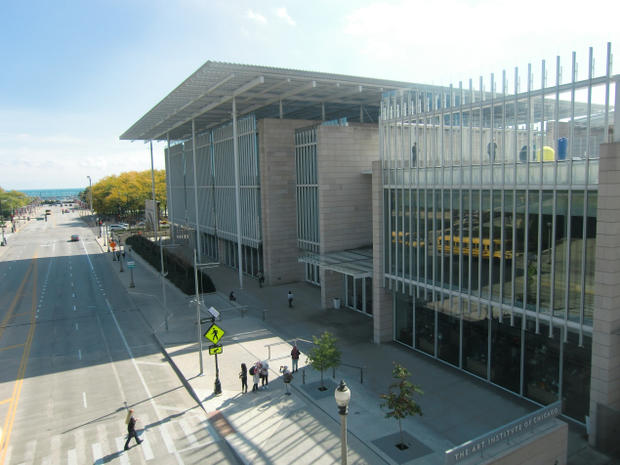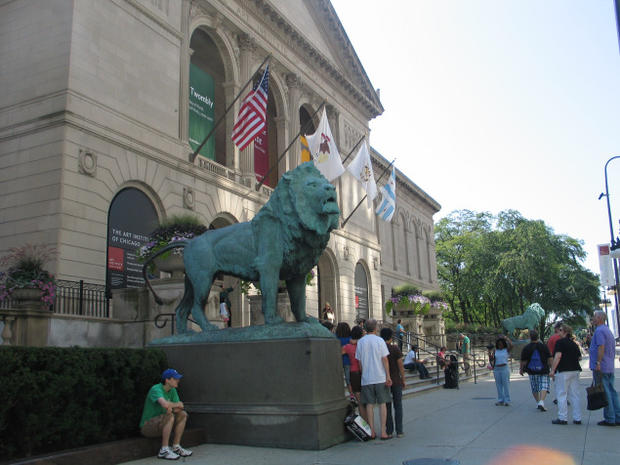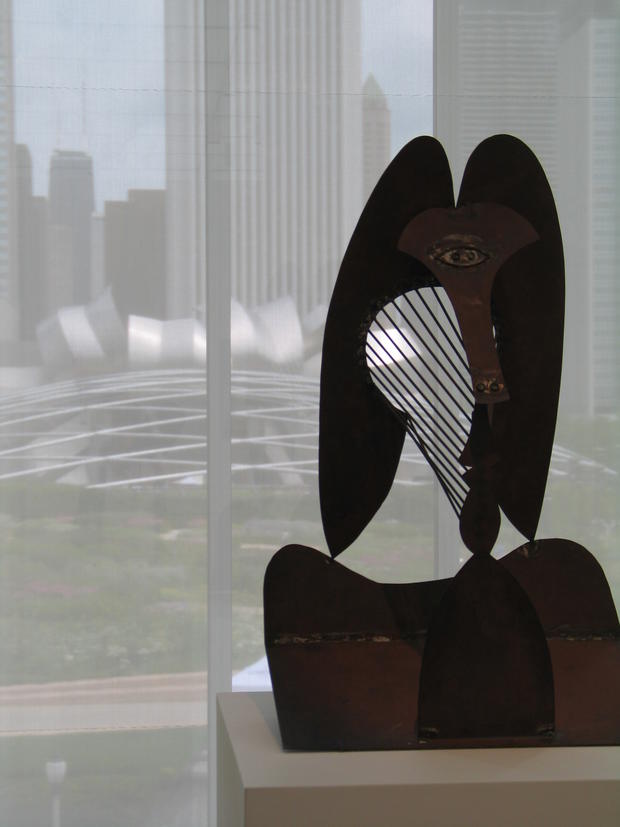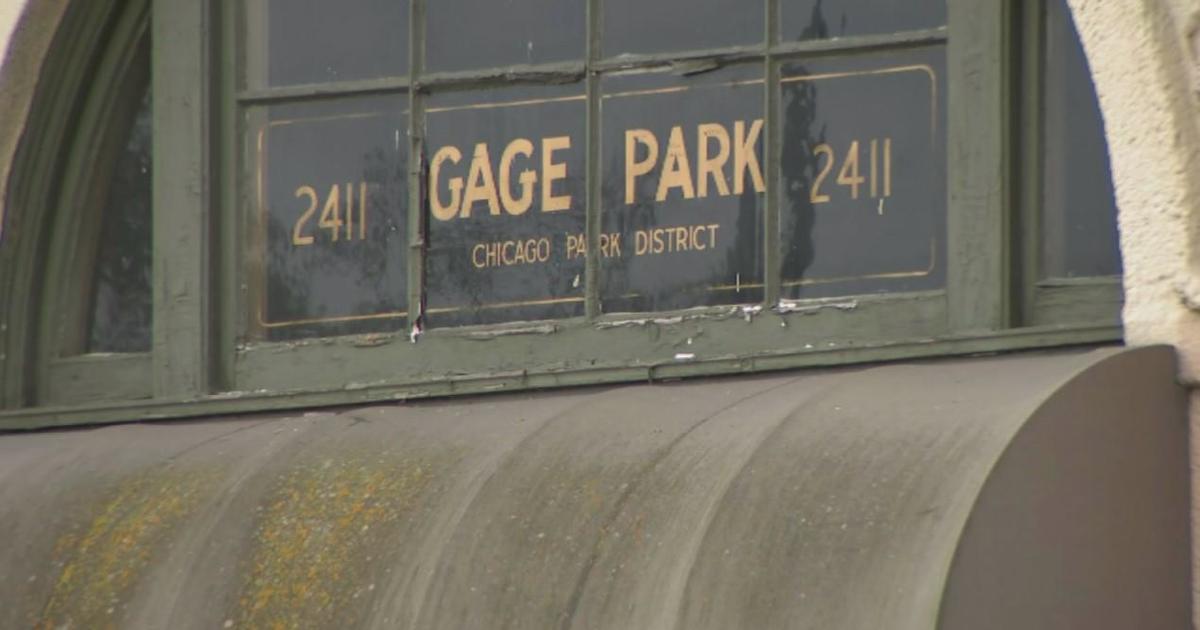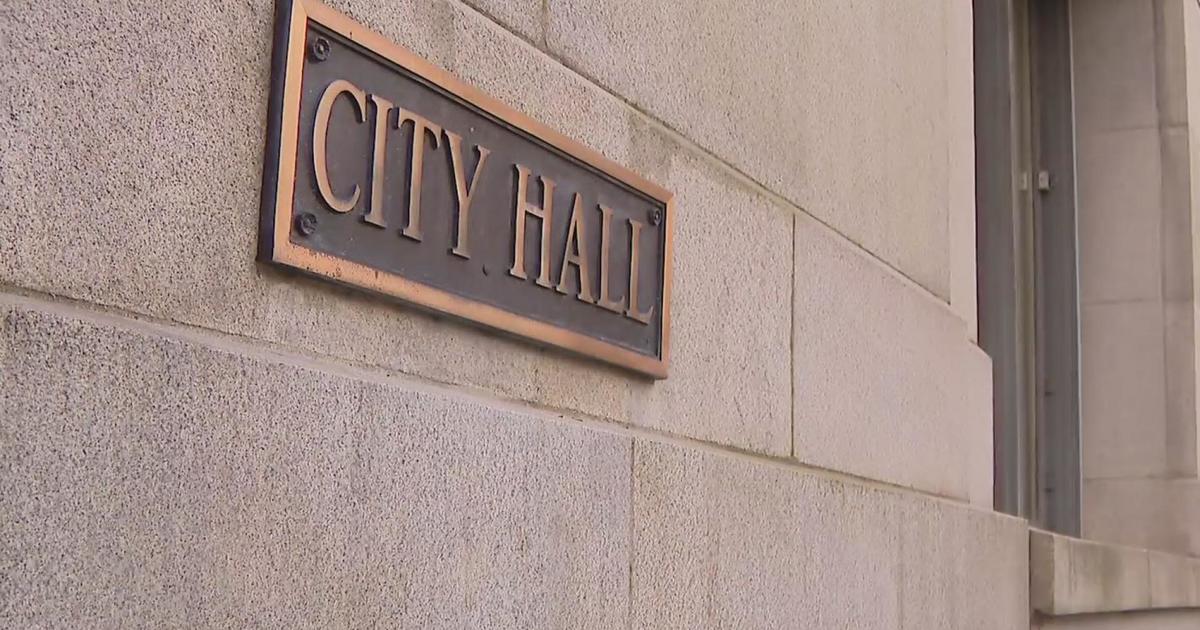Visitor's Guide To Art Institute Of Chicago
The Art Institute Of Chicago
111 S. Michigan Ave.
Chicago, IL 60603
(312) 443-3600
www.aic.edu
The Art Institute is the place to see surrealist Rene Magritte's famed "Time Transfixed," Realist Edward Hoppers' often referenced "Nighthawks," sixteenth century Italian and Spanish Renaissance artist El Greco's (Domenikos Theotokopoulos) magnificent "The Assumption of the Virgin," Post Impressionist Georges Seurat's renown "A Sunday on La Grande Jatte" and one of the world's largest collections of French Impressionist paintings not in Paris. Tip: Don't try to cover all of the museum's nearly one million square feet in one day. Either go to galleries that appeal to your inner soul or plan to do lunch there to break up a day with maybe Modern Wing and Architecture in one half and Impressionists, some of the Old Masters and Asian art in the other half. Or do American Art, Furniture, Thorne Rooms and Arms and Armor for the day.
The Art Institute of Chicago arguably had the coming of the 1893 World's Columbian Exposition in town to thank for its remarkable Beaux Arts styled building. After starting life in 1879 as the Chicago Academy of fine Arts and renamed in 1882 as the Art Institute, the museum had outgrown its collection and teaching academy space at Michigan Avenue and Van Buren Street when the city snagged the Exposition. The city, sprucing up for the fair, agreed with the art museum's trustees that a good place for the Art Institute to relocate would be the park area on Michigan Ave. at Adams St. Designed by Shepley, Turan and Coolidge, a Boston architecture firm, the building was ready for the move in October 1893 and officially opened in December. Major art donations enhanced the museum's reputation. The Henry Field family gifted paintings including works by Corot and Millet and the iconic pair of bronze lions that guard the entrance shortly after the museum opened.
About 30 years later, Bertha Honore Palmer donated more than 50 Impressionist and Post-Impressionist paintings in 1924. The next year, the museum received Georges Seurat's "Sunday Afternoon on La grand Jatte" as part of the Helen Birch Bartlett memorial collection. Large, influential donations continue to this year. Stefan Edlis and Gael Neeson donated a collection of pop art in April 2015 that includes, among others, pieces by Jasper Johns, Jeff Koons, Roy Lichtenstein, Charles Ray, and Andy Warhol.
As donations and purchases expanded, the collection and museum needs included improved auditorium, research library, teaching space and administration offices, and the Art Institute expanded to eight times its size. The moves included stretching east over the Illinois Central's railroad tracks and spreading into the former Goodman Theatre space. The latest expansion was the award-winning Modern Wing facing Monroe Street in 2009. Designed by Renzo Piano, its 264,000 square feet have made the Art Institute the country's second largest art museum next to New York City's Metropolitan Museum of Art.
With the exception of closed Thanksgiving, Christmas and New Year's Day, the museum is open daily from 10:30 a.m. to 5 p.m. and has extended hours Thursday until 8 p.m. Entry is free to Illinois residents on Thursday from 5 to 8 p.m. Admission fees are divided into General, Chicago Residents and Illinois Residents. Discounted city and state residents must have a valid ID with address. General entry for adults is $25 and $19 for students (high school and college) and seniors age 65 and older. Chicago resident fees are $20 adults, $14 students and seniors. Illinois fees are $22 adults, $16 students and seniors. Children under age 14 and members are free. The Art Institute is a Blue Star Museum member where active-duty military and their families are admitted free from Memorial Day through Labor Day. Admission tickets include permanent galleries and special exhibitions.
Related: Best Public Art In Chicago
Chicago has a terrific public transportation system of Metra commuter trains and Chicago Transit Authority (CTA) buses and "El" trains. From the west side of the Loop (downtown) take a bus east from Metra's Ogilvie Transportation Center or east from Union Station which services Amtrak and Metra lines. Metra also has east Loop electric line stations near the museum on Michigan Avenue. Click here for Metra's routes. In addition to CTA buses that run east to near the museum and north and south past the museum, the El line runs a block west of the museum. Click here for CTA routes.
The Art Institute works with Parking Panda, so visitors can find a parking garage space in downtown Chicago. Click here for Parking Panda. However, there is valet parking at the Modern Wing entrance on Monroe Street for $25 cash. Drop-offs are allowed at the Monroe Street entrance. Street parking is on Columbus Drive on the east side of the museum but cars that are not gone during rush hour from 4 to 6 p.m. will be towed. Public garages are also nearby. The East Monroe Street and Millennium Park Garage entry is at Columbus Drive and Monroe Street. Grant Park North Garage entry is Michigan Avenue between Madison and Randolph Streets. Grant Park South Garage entry is on Michigan Avenue between Adams and Van Buren Streets.
Upcoming Exhibits
While meandering the French Impressionists galleries in the 200s stop at Gallery 240 to see "Degas: At the Track, On the Stage." It is up from early July 2015 through February 2016. Along with the expected ballet subjects, the gallery showcases his horses. Look for "Scene from the Steeplechase: The Fallen Jockey" on loan from Washington D.C.'s National Gallery of Art. Also look for the "Little Dancer Aged Fourteen" sculpture temporarily loaned from a private collection.
In addition, "Gates of the Lord: The Tradition of Krishna Paintings" will be up in Regenstein Hall, Sept. 3, 2015 to Jan. 3, 2015. A don't-miss show, museum officials say it is the first time that Western India's Pushtimarg sect's paintings, objects and textiles are featured in a United States art exhibit. Also, stop at Galleries 1 and 2 to view "Alfred Stieglitz and the Nineteenth Century." The exhibit, which examines the influence of 1800s photographs on Stieglitz and his group, runs from Oct. 31, 2015 through March 13, 2016.
Some Other Options
Two items you may want to know before you go are Fast Pass and unusual dining options. If greeted by long lines, Fast Pass allows you to skip them for a few extra dollars and go to the Fast Pass sign at the ticket-Information desk. The pass will also get you past lines for special exhibits. Fast Pass is $35 adults and $29 students and seniors.
The Art Institute has a self-serve cafe, but try to try something different. For a quick bite, dessert, coffee or tea with a view of the Modern Wing's Griffin Court topped by an unusual roof, go to Caffe Moderno on the Wing's Level Two. For a view of the Chicago Skyline do lunch or Sunday brunch at Terzo Piano on the Wing's Level Three. Reservations are recommended. From Terzo Piano you can walk out onto the Bluhm Family Terrace to see whatever sculpture is currently there and snap photos of Millennium Park and the skyline. If ready to leave the museum you can take the Nichols Bridgeway connected to the Art Institute 60 feet above Monroe Street down into Millennium Park.
Related: Art Lover's Walking Tour Of Chicago
